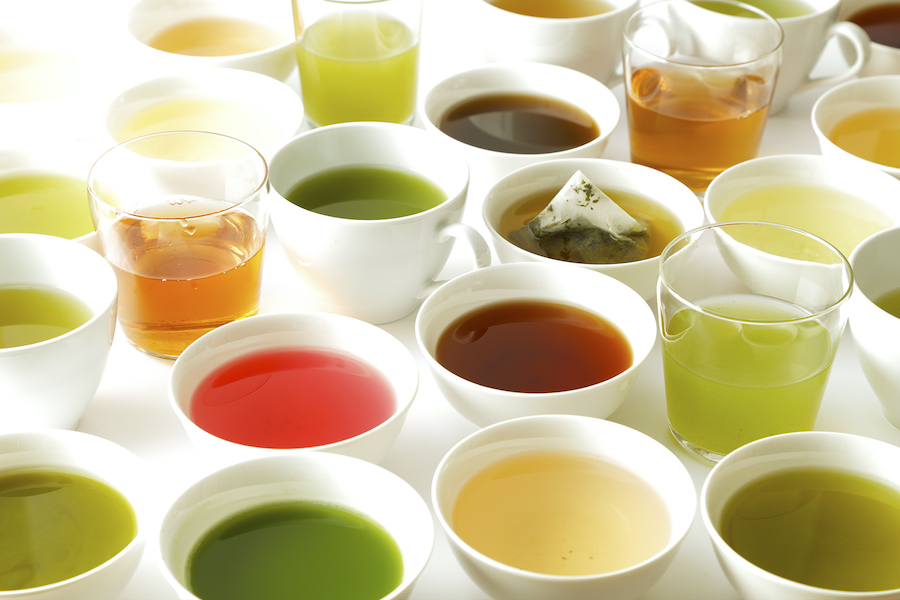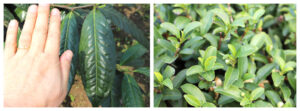MENU
MENU
Benefits of Tea
Benefits of Tea 2 “Functional ingredient of Tea”

Professor Yoriyuki Nakamura of the University of Shizuoka wrote the original article in Japanese, which CHAMART translated into English.
The scientific name for tea is Camellia sinensis (L.) Kuntze, and it is divided into two types: Chinese type (Camellia sinensis var. sinensis), which is a shrub with small leaves, and Assam type (Camellia sinensis var. assamica), which is a tall tree with large leaves.
Although the forms of the two types are very different, both contain caffeine, gallate-type catechins, and theanine, which are rare in other plants. The content of these functional ingredients is greatly affected by the type of tea, the cultivation conditions, and whether or not it is fermented.
In particular, catechins tend to be more abundant in Assam type and less abundant in Chinese type. In contrast, carotenoids tend to be more abundant in Chinese type, and fluorine tends to be more abundant in Assam type. On the other hand, the amounts of many components, including caffeine and amino acids, are more greatly affected by differences in picking time and cultivation management methods rather than the type of tea.

Photo: Tea leaves of Assam type (left) and Chinese type (right)
The softer the tea buds are, the higher the content of amino acids, catechins, caffeine, soluble matter, vitamin U, potassium, magnesium, copper, zinc, and iodine. Conversely, the harder the tea buds are, the higher the sugar, cellulose, flavonols, vitamin A (carotene), vitamin P, calcium, and fluorine. Also, cultivating tea plants in the shade increases amino acids and caffeine, but decreases catechins.
Generally, most of the components in green tea do not change significantly during processing. On the other hand, the components in oolong tea and black tea change, such as catechins being converted into theaflavin or thearubigin during processing. Also, vitamin C decreases as the fermentation progresses. As a result, oolong tea and black tea contain various component compositions.
In addition, in pu’er tea, catechins are converted into oxidized polymers through the action of microorganisms and auto-oxidation, and amino acids are broken down and significantly reduced in quantity.
Differences in the types and amounts of chemical compositions affect the benefits of tea. Thus, it is important to clarify each component and its functionality.
Writer’s Profile
Yoriyuki Nakamura
Specially-appointed professor, Director of the Tea Science Center, University of Shizuoka
https://dfns.u-shizuoka-ken.ac.jp/labs/tsc/index.html
Awards and commendations
2016 Awarded as Japanese Tea Industry Achievement Award: Popularization of tea varieties and pot seedling cultivation techniques
2015 Awarded as O-CHA Pioneer Award of academic research section: Tea breeding technology and Variety development
2013 Awarded as Tea Industry Technology Merit Award: Efforts in tea industry technology
2013 Awarded as Sugiyama Hikosaburo Tea Technology Award: Developing tea variety
2013 Awarded as Tea Academic Research Award: Tea breeding and tea propagation technology
Related article on the site:
Benefits of Tea 1 “Tea has long been a powerful elixir with abundant benefits!”
Benefits of Tea 2 “Functional ingredient of Tea”
Benefits of Tea 3 “Major components of tea”
Benefits of Tea 4 “Catechins”
Benefits of Tea 5 “Amino acids”
Benefits of Tea 6 “Caffeine”
Benefits of Tea 7 “Vitamins”
CATEGORY